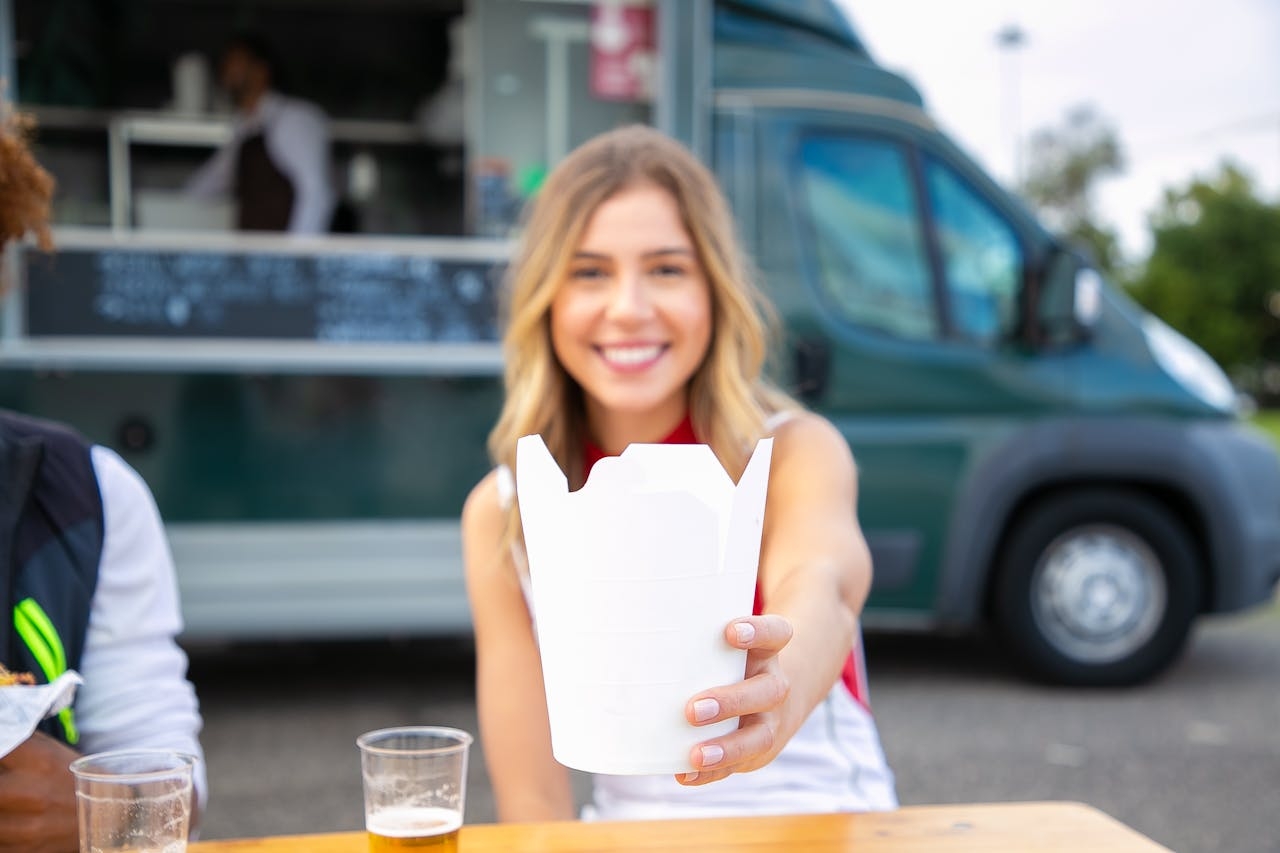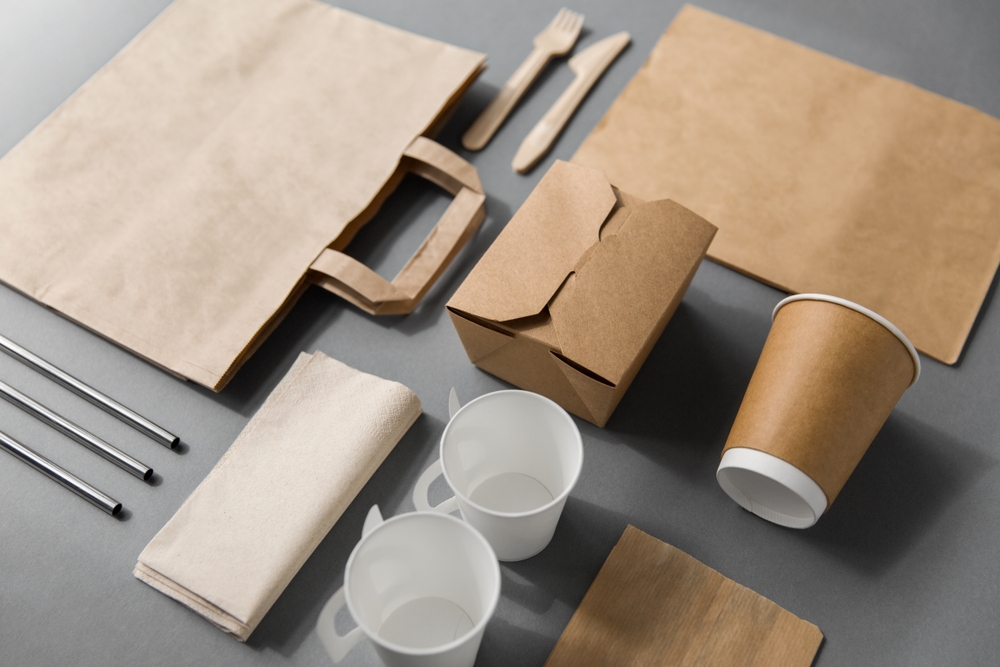The Role of Takeaway Packaging for Food Safety
By Anttoni Taimela · 21. March 2024
Takeaway packaging plays a pivotal role in maintaining food safety, and in this article, we will discuss “the role of takeaway packaging for food safety.”
By providing a hygienic barrier against contaminants, ensuring temperature control, and preventing cross-contamination, it serves as a silent protector in food hygiene.
As we shed light on its multifaceted functions, you’ll learn how industry standards and innovative design contribute to the secure delivery of your food.
Expect an informative journey through the materials, technology, and practices that make takeaway packaging essential for food safety.
Essential Insights
- Takeaway packaging is the gallant guardian of meals, critical to keeping food contamination at bay and preserving freshness – it’s not just about holding your fries.
- Design is more than just eye candy; savvy takeaway containers offer user-friendliness, maintain munchies at the right temperature, and say no to sneaky bacteria with smart tech.
- Sustainability isn’t a side dish, folks; eco-friendly packaging options are shaping the future of takeout with biodegradable materials, and custom branding is the cherry on top for food safety and business identity.
Takeaway Packaging and Food Safety
 food takeaway pack
food takeaway pack
Takeaway packaging, more than just a container, bravely shields your favorite meals from contamination.
It keeps out harmful bacteria and prevents virus transmission, playing an indispensable role in maintaining food safety.
It’s like a knight in shining armour, protecting the kingdom of food from external threats, and ensuring the citizens, aka consumers, are safe from foodborne health problems.
But wait, there’s more! Not only does takeaway packaging act as a barrier against contaminants, but it also preserves the freshness and quality of food.
It’s like creating a time capsule, locking in the goodness and preventing any bacterial growth, so your food remains as fresh as when it first left the restaurant’s kitchen.
Food businesses must therefore guarantee their containers are clean, intact, and made from non-contaminating materials, particularly for vacuum packing or modified atmosphere packing for takeaway food.
Barrier Against Contaminants
Ever wondered why restaurants use single-use paper packaging?
It turns out, this simple strategy can significantly reduce food contamination by preventing direct contact and cross-contamination between different food items.
However, completely doing away with single-use packaging could open Pandora’s box, leading to higher risks of foodborne pathogen proliferation if not coupled with enhanced food hygiene practices.
As a solution to this conundrum, the food industry is witnessing the rise of antimicrobial packaging.
This form of packaging acts as a superhero, slowing down the growth process of microorganisms and consequently extending the safety and shelf life of takeaway food.
Temperature Control
Temperature control in takeaway packaging serves as a thermostat for your food.
It maintains the correct temperature, so your food remains safe and tasty, just as the chef intended.
By preventing bacteria growth, insulated packaging acts as a guardian, safeguarding consumer health.
For cold foods, techniques such as surrounding the insulated packaging with ice packs function as a personal air-conditioner, ensuring the food remains cold and safe for consumption.
The effectiveness of insulated food packaging is due to its multiple material layers that shield food from fluctuating external temperatures during delivery.
Hence, investing in quality insulated packaging is a key strategy for ensuring that customers receive their meals at the desired temperature, thereby enhancing customer satisfaction and food safety.
Preventing Cross-Contamination
Single-use packaging is like a dedicated bodyguard, preventing cross-contamination among different food items to maintain food safety.
But what about ensuring the integrity of the food during transportation?
Enter tamper-resistant packaging, equipped with clear tamper-evident features, playing a critical role in preventing cross-contamination.
Then there are the unsung heroes in the form of secure and leak-proof packaging designs, crucial in preventing spills and avoiding contamination when the food is in transit.
The inclusion of moisture absorbers reduces water activity, minimizing microbial growth, and enhancing the safety and quality of dry and fresh food products.
Oxygen scavengers help decrease oxygen levels, restricting spoilage reactions, while carbon dioxide emitters and absorbers suppress the growth of aerobic bacteria and fungi, safeguarding the integrity of the package.
Some key packaging components that contribute to food safety and quality include:
- Secure and leak-proof designs
- Moisture absorbers
- Oxygen scavengers
- Carbon dioxide emitters and absorbers
These components work together to ensure that the food remains food safe and fresh during transportation and storage.
Design Elements for Safe and Appealing Takeaway Packaging
 Packaging Design
Packaging Design
Selecting the appropriate takeaway packaging material can be compared to choosing the ideal outfit for a party.
It requires considering various aspects of container design, including its resistance to moisture and durability, influenced by the type of sustainable materials used.
But it’s not just about the functionality.
The packaging also needs to be appealing, just like how a good outfit makes you feel confident and attractive.
User-Friendly Features
User-friendly packaging functions as a thoughtful friend, making your life easier and more enjoyable.
It ensures functional interaction, such as easy opening and closing of the package, enhancing the customer experience.
Accessibility is a crucial element of user-friendly packaging, ensuring all customers, including those with disabilities, can easily use it.
Single-use and disposable packaging plays a vital role in reducing the risks of food contamination and cross-contamination, which is significant for food safety.
And let’s not forget about the importance of trust in a relationship.
Tamper-evident features in takeaway packaging ensure that the food remains uncompromised, instilling customer trust and maintaining food safety.
Preservation of Freshness
 fresh food packing
fresh food packing
Active packaging works like a fitness trainer for your food, enhancing its shelf-life and boosting safety or sensorial properties, ultimately improving food quality.
For instance, ethylene scavengers included in packaging materials help delay the ripening of climacteric fruit, preserving freshness during transportation and before consumption.
Packaging designed with antioxidants can significantly reduce lipid oxidation in food products, preventing the development of rancid odours and the degradation of nutritional quality.
The combined use of these active packaging technologies is crucial in extending the shelf-life of foods while also ensuring the maintenance of their freshness and sensory qualities.
Visual Appeal
As a well-dressed person garners attention, attractive and tastefully presented takeaway packaging can boost sales and foster customer loyalty.
Custom branding on takeaway packaging, like consistent use of colours and logos, visually represents the restaurant’s commitment to quality, gaining customer trust and contributing to a cohesive brand experience.
Design elements that can make a product stand out on crowded shelves include:
- Legible labels
- Clear fonts
- Product visibility
- Appealing typefaces
Minimalist packaging designs, with clean lines and tactile appeal, create an inviting look that can attract customers and clients and support a perception of higher quality, especially when it comes to delivery orders.
Sustainable Takeaway Packaging Solutions

Greenwashing Packaging
As environmental awareness grows, consumers are demanding transparency and eco-friendly packaging options, propelling the growth of sustainable takeaway packaging solutions.
In fact, a significant percentage of consumers consider the environment and sustainable packaging important, and believe it is the company’s responsibility to offer such options, impacting customer loyalty and the perceived value of products.
Sustainable packaging materials, much like environmental superheroes, are designed to minimize environmental impact throughout their lifecycle by conserving energy and water and reducing pollution.
They include compostable packaging materials, made from plant-based resources, that decompose into organic matter that can be used as fertilizer, thus reducing landfill waste.
There is a high demand for innovative solutions using biodegradable and compostable materials in the takeaway packaging market.
Businesses are showcasing their commitment to sustainability by using compostable and biodegradable food containers even for takeaway food.
However, one should be cautious while switching to sustainable packaging, as it could inadvertently increase the persistence and circulation of foodborne pathogens if not coupled with proper food hygiene practices, potentially leading to serious health problems.
Biodegradable and Compostable Materials
Biobased packaging materials like bamboo and seaweed are winning the popularity contest in the takeaway packaging market due to their biodegradability, which contributes to a lower environmental impact.
The production of plant-based compostable materials, like bagasse, takes advantage of renewable resources and helps in reducing the incineration of agricultural byproducts.
The use of compostable materials can:
- Reduce greenhouse gas emissions by avoiding methane release from organic waste decomposition in landfills
- Switch from fossil-based plastics to compostable packaging, helping decrease reliance on fossil fuels and diminishing the long-standing environmental impacts associated with plastic waste
- Contribute to carbon sequestration and transform waste into beneficial compost by designing compostable packaging materials with the circular economy in mind.
The adoption of composting practices enhances soil structure and fertility, promoting plant growth and potentially reducing the need for synthetic fertilizers. Some benefits of composting include:
- Improved soil structure and water retention
- Increased nutrient availability for plants
- Reduced soil erosion
- Decreased reliance on chemical fertilizers
In addition, using eco-friendly🌱 materials and barriers in packaging can aid in preserving the freshness and integrity of produce, for example, thereby extending its shelf life.
Innovations like migration barrier cartonboard are emerging as an alternative to plastics, capable of securing flavor and aroma while maintaining biodegradability and recyclability.
Compostable packaging presents a practical solution for the food service sector by handling food contamination and permitting a unified waste stream directed to composting facilities.
Recyclable Options
In the world of widely recycled food packaging materials, you’ll find the usual suspects, including food containers:
- Food and drink cans
- Plastic bottles
- Cardboard tubes and boxes
- Glass bottles and jars
Metal cans, usually made from aluminium, are like the phoenix, highly recyclable and capable of being reprocessed indefinitely with minimal loss in quality, using significantly less energy compared to producing new aluminium.
Local recycling guidelines may require checking for the acceptance of certain recyclable materials, such as:
- plastic tubs
- pots
- trays
- cartons
- foil trays
The environmental impact of sustainable packaging is influenced by factors including production processes, resource consumption, and disposal methods, which businesses should consider in their packaging choices.
Custom Branding and Food Safety Standards
Custom branding on takeaway packaging mirrors a restaurant’s signature dish, amplifying the presentation and customer recognition of the restaurant brand.
Selecting the proper materials for custom branded takeaway packaging is crucial for simultaneously achieving visual appeal and ensuring food safety.
Adherence to food safety standards is vital for takeaway packaging to protect consumers and maintain brand reputation.
Standards such as ISO:9001, BRC, and Sedex are recognized benchmarks that ensure packaging products meet stringent food safety requirements.
Compliance with Regulations
Food packaging has to disclose critical safety information, much like a food label, including allergen content, net quantity, and storage requirements, to protect consumer health and those with food allergies.
Under EU’s FIC Regulation 1169/2011 and its Great Britain equivalent, food labels must be transparent, non-misleading, and clearly state any allergens, while ensuring guidance on composition and preparation is provided.
Non-prepacked foods are subject to labelling laws, such as indicating allergens and the quantity of certain ingredients, which must be clearly presented to consumers at the shop or point of sale.
Businesses must observe specific regulations for eco, biodegradable, and compostable packaging materials in order to stay legally compliant and avoid penalties.
Strengthening Brand Identity
 brand packaging
brand packaging
Custom food packaging acts as a restaurant’s brand extension, embodying its values and identity to form a unique market image.
Branded packaging portrays a professional image and demonstrates commitment to quality and food safety, aiding in the food business networking and partnerships.
Minimalist packaging designs can convey a brand’s commitment to quality and simplicity, underlining core brand values without unnecessary embellishments.
Some benefits of minimalist packaging include:
- Conveys a sense of elegance and sophistication
- Allows the product to stand out on the shelf
- Creates a clean and modern aesthetic
- Reduces waste and environmental impact
Smart packaging with digital interactive features, such as QR codes, enables consumers to engage with the brand and access personalized product information, enhancing their experience with the brand.
Emerging Trends in Takeaway Packaging
Advancements in takeaway packaging are increasingly driven by consumer demands for food safety and convenience.
During the COVID-19 pandemic, disposable packaging played a critical role in virus prevention across Europe, showing the importance of packaging in protecting public health.
Flexible packaging, with innovations that support efficient storage and waste reduction, as well as convenient features like resealable closures, continues to be a leading trend.
The packaging a favourite restaurant chooses reflects its identity and dedication to aligning with current industry trends.
Minimalist Designs
The minimalist trend in food packaging, marked by simplified visual design with fewer colors and graphics, highlights the product essentials, offering a refreshing change in an often cluttered space.
Smart Packaging Technologies
Smart packaging technologies such as antimicrobial coatings are innovative designs that enhance food safety.
Antimicrobials serve a crucial role in treating infections caused by bacteria, which includes a range of foodborne pathogens.
However, it is important to note that the emergence and spread of resistant bacteria have been linked to the overuse and misuse of antimicrobials.
Migration barrier packaging, utilised effectively in the cosmetics and medicine industry, also ensures the safety and quality of dry food products by preventing the introduction of organic pollutants.
Summary
In a nutshell, takeaway packaging plays a pivotal role in maintaining food safety and enhancing the customer experience.
From acting as a barrier against contaminants and controlling temperature to preventing cross-contamination, the importance of takeaway packaging cannot be overstated.
The design elements, including user-friendly features, preservation of freshness, and visual appeal, contribute to a superior dining experience.
Sustainable packaging solutions such as biodegradable and compostable materials, and recyclable options, are increasingly gaining traction.
Custom branding on takeaway packaging, compliance with regulations, and the adoption of emerging trends further underscore the significance of takeaway packaging in the food business.
Frequently Asked Questions
What is the role of packaging in food safety?
Packaging plays a crucial role in keeping your food safe from contamination and preserving its quality and freshness, while also making it convenient for customers. It’s basically the superhero cape of your food front line!
What are the 5 basics to food safety?
The five basics to food safety are: keep clean, separate raw and cooked, cook thoroughly, keep food at safe temperatures, and use safe water and raw materials. Following these keys helps prevent microbes from multiplying.
What are the design elements of takeaway packaging?
Takeaway packaging design elements should prioritize user-friendly features, preservation of freshness, and visual appeal. Keep it practical, fresh, and visually pleasing!
What are some sustainable takeaway packaging solutions?
Use biodegradable, compostable, and recyclable materials for sustainable takeaway packaging solutions. Cheers to a greener planet!
How does custom branding affect food safety standards?
Custom branding can enhance presentation and customer recognition for companies, but it’s crucial to ensure compliance with food safety standards to protect consumers and uphold brand reputation.

